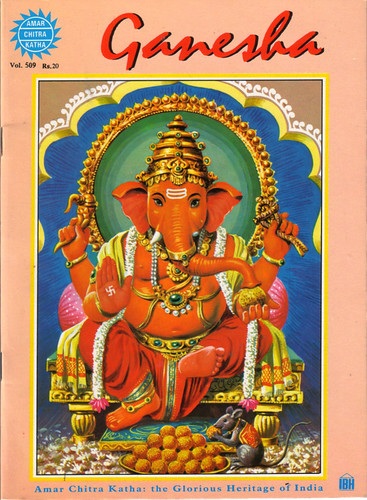
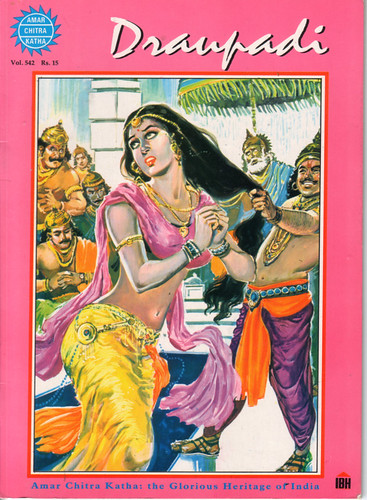
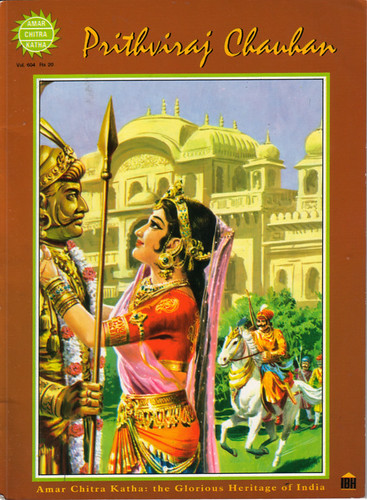
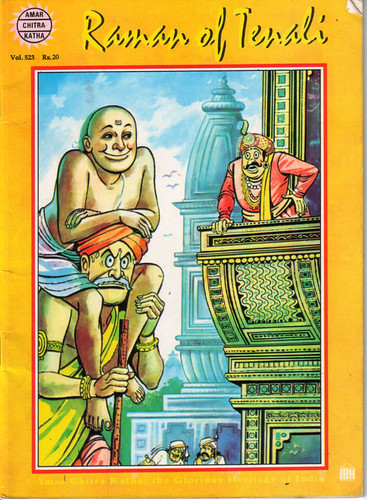
These book are published by India Book House under the Amar Chitra Katha imprint, which is dedicated to depicting "the glorious heritage of India." From what I can gather from the books themselves and the company's website, they are the Indian equivalent of Classics Illustrated - and I don't mean that in a very good way.
The books tell stories from Indian legends, mythology, religion, and folklore. Genesha is the origin story of the elephant-headed god (quite literally, "who he is and how he came to be!"); Draupadi tells the complicated tale of a magical girl with five husbands who gets drawn into internecine rivalry/warfare between cousins; Prithviraj Chauhan is the martial tale of a legendary king and warrior (kind of Arthurian, but not really); and Raman of Tenali is a trickster figure from folk-lore who is based on a historical figure, a court jester.
Unfortunately, even given this exciting source material, the comics are pretty flat from both artistic and narrative perspectives.
One thing that was surprising about the art is that I could not discern a dominant house style: two of the books seem to be influenced by Hal Foster via Curt Swan, the Prithviraj tale is done in a very dark, sketchy style, and the Raman story is very cartoony and reminds me of European humor strips. Regardless of the style, none of the artwork is terribly dynamic.
It's not just the draftsmanship that is the issue: the storytelling is stilted and slow. Most of the panels are what Scott McCloud would call duo-specific; that is, the words and pictures send roughly the same message. One of the primary effects of this particular relationship between words and pictures in a comic is to add a sense of the old-fashioned to the storytelling, and that might have been the intent in these books; however, when over- or badly-used, it can lead to plain redundancy, and that seems to be more the case here.

This page from the Prithviraj story is a prime example of this. Instead of the captions and pictures working together to build a complete narrative and move it forward, there's a lot of repetition. Even this action sequence from Ganesha suffers from the same drawback:
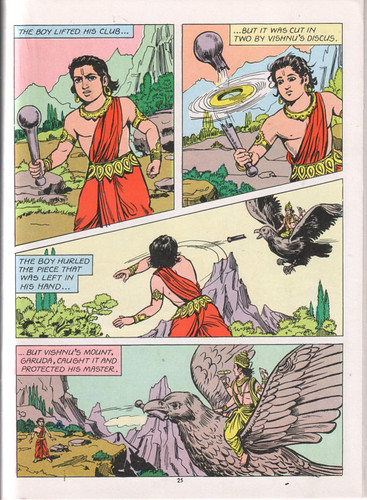
Unfortunately, the strong instructional motivation of the books seems to overshadow the storytelling itself; it may be a case of the overwhelming respect for the material getting in the way of the narrative. Or, it may be that the the production system employed by ACK is just a little bit too constricting, as this panel from a behind-the-scenes feature on their website indicates:
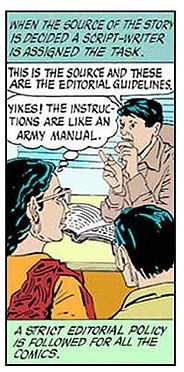
(Click through for the full feature)
Or it may simply be that anything that's supposed to be good for us is never any fun, and these books are certainly supposed to be good for us, as this inside-back-cover ad tells us:

Still and all, I have to applaud the motivation behind the series; maintaining a cultural heritage and trying to make it accessible to new generations can only be considered a good thing. There were some nice moments in each of the books, and actually the Raman tale is pretty funny in parts. And while the books are very chaste (just like Bollywood movies), there are some scenes that would fit right in with the current level of violence in the spandex set:

Rolling Head of the Son of Parvarti, anyone? (with apologies to Scipio)
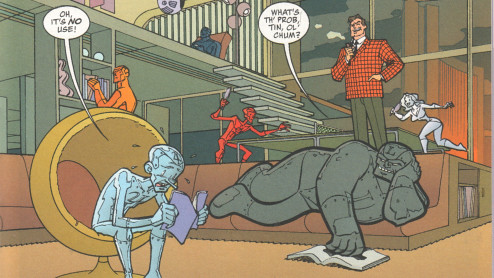


No comments:
Post a Comment